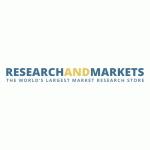
The "Lubricant Additives Market: Global Industry Trends, Share, Size, Growth, Opportunity and Forecast 2019-2024" report has been added to ResearchAndMarkets.com's offering.
The global lubricant additives market reached a value of around US$ 15.4 Billion in 2018. The market is further projected to reach a value of US$ 18.5 Billion by 2024, exhibiting a CAGR of more than 3% during 2019-2024.
This report provides a deep insight into the global lubricant additives market covering all its essential aspects. This ranges from macro overview of the market to micro details of the industry performance, recent trends, key market drivers and challenges, SWOT analysis, Porter's five forces analysis, value chain analysis, etc.
Market Drivers
Many lubricant additives contain anti-wear, anti-rust or anti-corrosive characteristics, which prevent damage to coatings and surfaces inside the engine.
Some lubricant additives are also used to maintain the required physical properties (such as viscosity) at all temperatures and operating conditions. This provides adequate flow and viscosity of the engine oil in all situations.
Additives with antioxidant properties aid in slowing down the oxidation process and the build-up of unwanted engine contaminants and oil thickening. They also help in keeping the engine surfaces and parts clean along with controlling deposit mediated engine oil thickening.
Additives with friction or viscosity modifying properties can also help in increasing the fuel economy. This is by decreasing the friction between moving surfaces or allowing favourable viscosity profiles that further provides improved efficiency.
Advanced lubricant additives also benefit the environment as they can aid in reducing carbon dioxide emissions from vehicles and also allow the effective use of energy resources.
Market Summary
Based on the type, the market has been segmented as dispersants, viscosity index improvers, detergents, antiwear and antioxidants, corrosion inhibitors, friction modifiers and emulsifiers.
On the basis of the end-use, automotive lubricants represent the largest segment. Other major segments covered in the report include metalworking fluid, industrial engine oil, process oil and grease.
On the basis of the distribution channel, the report has segmented the market into institutional and retail.
Region-wise, the market has been segmented into Asia Pacific, Europe, North America, Middle East and Africa, and Latin America. Amongst these, Asia Pacific currently represents the largest market.
Key Questions Answered
- How has the global lubricant additives market performed so far and how will it perform in the coming years?
- What are the key regions in the global lubricant additives market?
- What are the key product types in the global lubricant additives market?
- What are the key end-use segments in the global lubricant additives market?
- What are the major distribution channels in the global lubricant additives market?
- What are the various stages in the value chain of the global lubricant additives industry?
- What are the key driving factors and challenges in the global lubricant additives industry?
- What is the structure of the global lubricant additives industry and who are the key players?
- What is the degree of competition in the global lubricant additives market?
- How are lubricant additives manufactured?
Topics Covered
1 Preface
2 Scope and Methodology
2.1 Objectives of the Study
2.2 Stakeholders
2.3 Data Sources
2.3.1 Primary Sources
2.3.2 Secondary Sources
2.4 Market Estimation
2.4.1 Bottom-Up Approach
2.4.2 Top-Down Approach
2.5 Forecasting Methodology
3 Executive Summary
4 Introduction
4.1 Overview
4.2 Key Industry Trends
5 Global Lubricant Additives Market
5.1 Market Overview
5.2 Market Performance
5.3 Market Breakup by Type
5.4 Market Breakup by End-Use
5.5 Market Breakup by Distribution Channel
5.6 Market Breakup by Region
5.7 Market Forecast
5.8 SWOT Analysis
5.9 Value Chain Analysis
5.10 Porters Five Forces Analysis
5.11 Price Analysis
6 Market Breakup by Type
6.1 Dispersants
6.2 Viscosity Index Improvers
6.3 Detergents
6.4 Antiwear and Antioxidants
6.5 Corrosion Inhibitors
6.6 Friction Modifiers
6.7 Emulsifiers
7 Market Breakup by End-Use
7.1 Automotive Lubricant
7.2 Metalworking Fluid
7.3 Industrial Engine Oil
7.4 Process Oil
7.5 Grease
8 Market Breakup by Distribution Channel
8.1 Retail
8.2 Institutional
9 Market Breakup by Region
9.1 Asia Pacific
9.2 Europe
9.3 North America
9.4 Middle East and Africa
9.5 Latin America
10 Imports and Exports
10.1 Imports by Major Countries
10.2 Exports by Major Countries
11 Lubricant Additives Manufacturing Process
11.1 Product Overview
11.2 Raw Material Requirements
11.3 Manufacturing Process
11.4 Key Success and Risk Factors
12 Competitive Landscape
12.1 Market Structure
12.2 Key Players
12.3 Profiles of Key Players
12.3.1 Chevron Corp.
12.3.2 Afton Chemical Corporation
12.3.3 The Lubrizol Corporation
12.3.4 Infineum International Limited
12.3.5 BASF SE
12.3.6 BRB International B.V.
12.3.7 Wuxi South Petroleum Additive Co.
12.3.8 Croda Lubricants
12.3.9 DOG Chemie
12.3.10 Dorf Ketal
12.3.11 Dover Chemical
12.3.12 Eni S.p.A.
12.3.13 Evonik Industries AG
12.3.14 Jinzhou Kangtai Lubricant Additives Co. Ltd.
12.3.15 King Industries Inc.
For more information about this report visit https://www.researchandmarkets.com/r/y9y9lf
View source version on businesswire.com: https://www.businesswire.com/news/home/20190626005674/en/
Contacts:
Laura Wood, Senior Press Manager
press@researchandmarkets.com
For E.S.T Office Hours Call 1-917-300-0470
For U.S./CAN Toll Free Call 1-800-526-8630
For GMT Office Hours Call +353-1-416-8900
Related Topics: Lubricants and Greases
